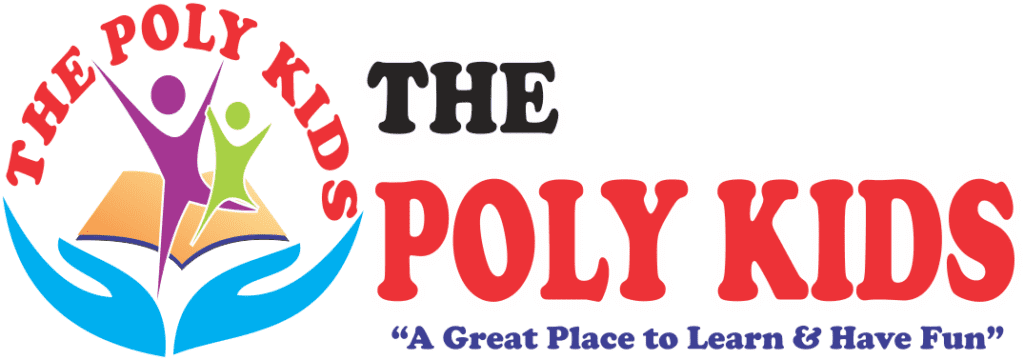A Simple Guide to Teaching Digital Literacy to Young Kids
At The Poly Kids, we believe that education must prepare children not only for the present but also for the future. Today’s world is powered by technology, and children are surrounded by screens, gadgets, and the internet from an early age. While this opens the door to learning and creativity, it also requires careful guidance. That is why digital literacy for young kids is essential. It helps them use technology responsibly, safely, and meaningfully.
In this blog, we will explore what digital literacy means, why it matters, and how parents and educators can introduce it to children in fun and age-appropriate ways.
What is Digital Literacy for Young Kids?
Digital literacy for young kids goes beyond knowing how to use a tablet or smartphone. It is about understanding technology, identifying reliable information, using tools creatively, and practicing safety online. For young children, it means learning the basics: recognizing symbols, navigating apps, engaging in interactive games, and understanding simple rules of online behavior.
At The Poly Kids, we approach digital literacy as a life skill—one that will grow with children and evolve as they become older.
Why is Digital Literacy Important at an Early Age?
Introducing digital literacy for young kids provides several long-term benefits:
-
Safety First: Children learn how to use digital devices responsibly, avoiding unsafe websites and content.
-
Confidence with Technology: Early exposure builds comfort with digital tools, making learning smoother later.
-
Critical Thinking: Kids begin to question what they see online and understand the difference between fact and fiction.
-
Creativity and Collaboration: Digital platforms encourage artistic expression, problem-solving, and teamwork.
By starting early, we ensure that children grow into responsible digital citizens.
The Role of Parents and Teachers
Parents and educators play a central role in shaping digital literacy for young kids. At The Poly Kids, our approach is based on partnership:
-
Parents can set boundaries, model safe behavior, and involve children in positive online activities like reading apps or educational games.
-
Teachers can introduce structured lessons, ensuring kids understand both the fun and the responsibility of technology use.
This collaboration creates a balanced environment where children learn to use technology wisely.
Fun and Simple Ways to Teach Digital Literacy
Teaching digital literacy for young kids doesn’t mean giving long lectures. Instead, it should be interactive and engaging. Here are some easy methods:
1. Start with Educational Apps
Introduce apps designed for preschool learning. Games that teach alphabets, numbers, or problem-solving make digital experiences fun and meaningful.
2. Use Storytelling
Digital storybooks combine visuals and sound, making reading more exciting. They also teach kids how to navigate simple tools.
3. Teach Online Safety Rules
Simple messages like “Don’t click without asking” or “Only use apps parents approve” help build safe habits early.
4. Explore Creativity Tools
Drawing apps, music programs, or simple coding games can boost imagination while strengthening tech skills.
5. Encourage Balance
Show children that digital time should be balanced with outdoor play, reading, and family time.
Building Healthy Digital Habits
Developing healthy routines is an important part of digital literacy for young kids. At The Poly Kids, we encourage:
-
Screen Time Limits: Short, supervised sessions ensure children don’t overuse technology.
-
Positive Role Modeling: Kids learn best when they see adults using devices responsibly.
-
Tech-Free Family Time: Meals, playtime, and bedtime are opportunities to bond without screens.
These habits build discipline while ensuring that digital learning remains a positive experience.
Challenges in Teaching Digital Literacy
While digital literacy for young kids is beneficial, there are challenges too:
-
Excessive Exposure: Too much screen time can harm focus and health.
-
Online Risks: Inappropriate content and unsafe interactions are dangers parents must guard against.
-
Information Overload: Kids may struggle to filter what is true and what is misleading online.
By staying proactive, parents and schools can minimize these challenges and create a safe environment for digital growth.
The Poly Kids Approach
At The Poly Kids, we integrate digital literacy for young kids into our early learning programs. We believe in a balanced approach where children experience technology alongside traditional play, storytelling, art, and physical activities. Our classrooms use interactive tools to make learning more engaging, while teachers focus on instilling safe and responsible habits.
By blending creativity with technology, we prepare children not only for academics but also for real-world problem-solving in the digital era.
Preparing Kids for the Future
Technology will continue to evolve, and future careers will rely heavily on digital skills. By prioritizing digital literacy for young kids, we give them a strong head start. These early lessons become the foundation for coding, online research, digital communication, and safe navigation of online spaces as they grow older.
In short, today’s playful interaction with apps and devices can shape tomorrow’s innovators, leaders, and creators.
Conclusion
At The Poly Kids, our mission is to nurture confident, curious, and responsible learners. Teaching digital literacy for young kids is a vital part of that mission. With guidance from parents and teachers, children can explore technology safely while building skills that will serve them for a lifetime. By creating balanced routines, fun learning opportunities, and safe habits, we prepare young learners to thrive in a digital world and build a brighter, smarter future.


